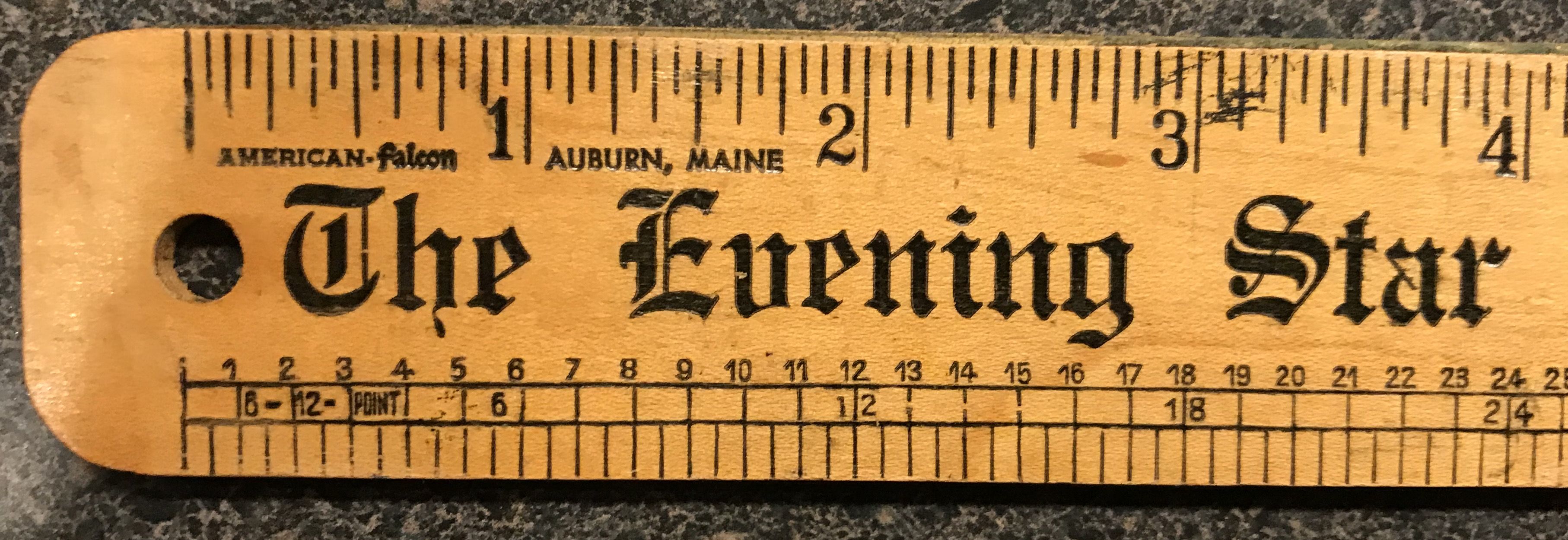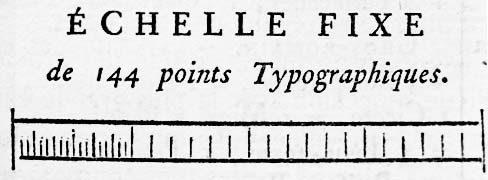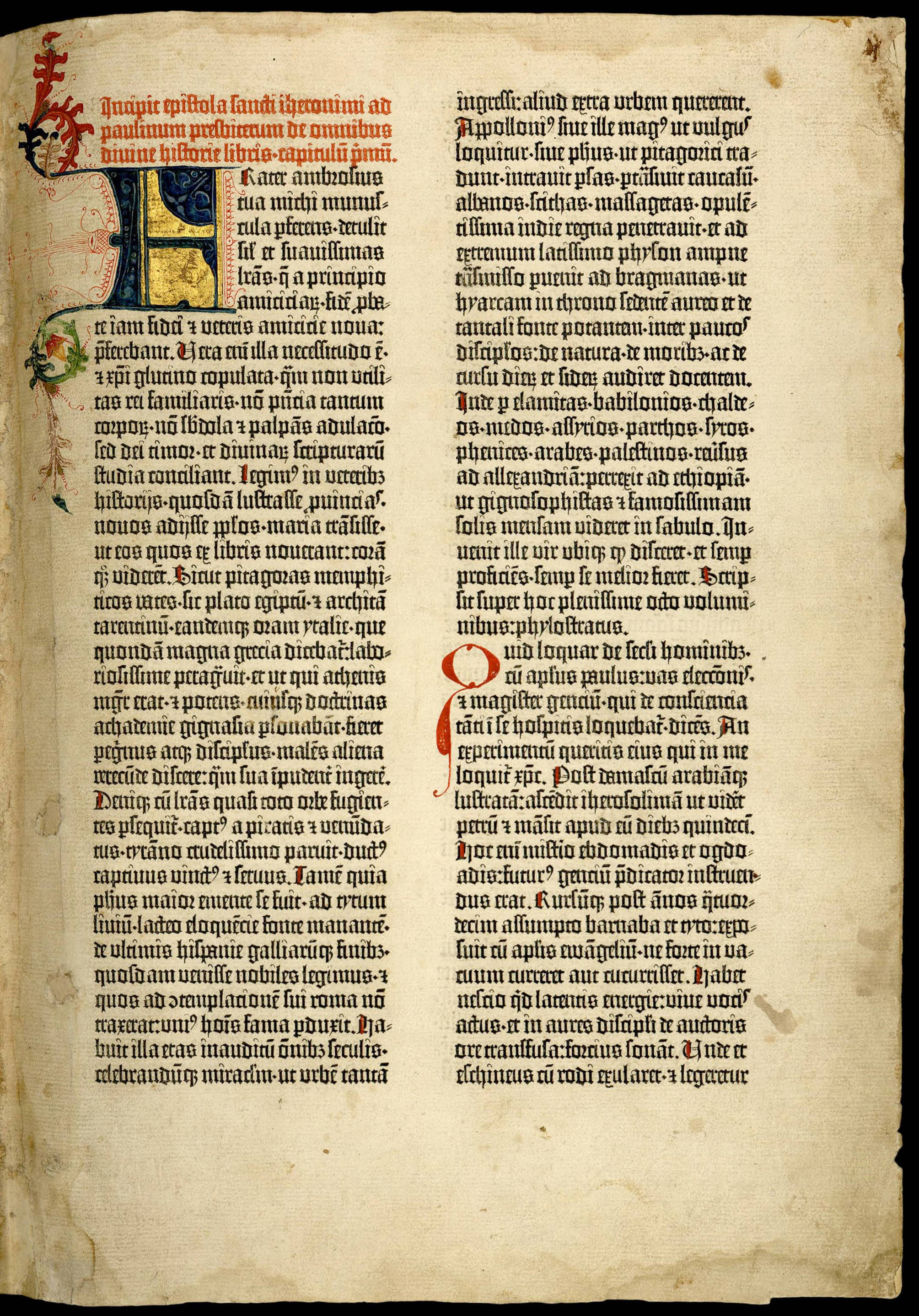|
En (typography)
An en (from English '' en quadrat'') is a typographic unit, half of the width of an em. By definition, it is equivalent to half of the body height of the typeface (e.g., in 16- point type it is 8 points). As its name suggests, it is also traditionally the width of an uppercase letter "N". The en dash (–) and en space ( ) are each one ''en'' wide. In English, the en dash is commonly used for inclusive ranges (e.g., "pages 12–17" or "August 7, 1988 – November 26, 2005"), and increasingly to replace the long dash ("—", also called an em dash or em rule). When using it to replace a long dash, spaces are needed either side of it – like so. This is standard practice in the German language, where the hyphen is the only dash without spaces on either side ( line breaks are not spaces ''per se''). Associated symbols and . Encodings: * ''en space'': * ''en dash'': See also * Non-breaking space width variations * Standard typographic symbols * x-height u ... [...More Info...] [...Related Items...] OR: [Wikipedia] [Google] [Baidu] |
En Quad
In typography, a quad (originally ''quadrat'') was a metal spacer used in letterpress typesetting. The term was later adopted as the generic name for two common sizes of spaces in typography, regardless of the form of typesetting used. An em quad (originally ''m quadrat'') is a space that is one '' em'' wide; as wide as the height of the font. An en quad (originally ''n quadrat'') is a space that is one '' en'' wide: half the width of an em quad. Both are encoded as characters in the General Punctuation code block of the Unicode character set as U+2000 EN QUAD and U+2001 EM QUAD, which are also defined to be canonically equivalent to U+2002 EN SPACE and U+2003 EM SPACE respectively. History In 1683, in Joseph Moxon's book on the art of printing, the terms ''m'' and ''n quadrat'' are attested: And as there is three Heighths or Sizes to be considered in Letters Cut to the same Body, so is there three Sizes to be considered, with respect to the Thicknesses of all these Letters, wh ... [...More Info...] [...Related Items...] OR: [Wikipedia] [Google] [Baidu] |
Typographic Unit
Typographic units are the units of measurement used in typography or typesetting. Traditional typometry units are different from familiar metric units because they were established in the early days of printing. Though most printing is digital now, the old terms and units have persisted. Even though these units are all very small, across a line of print they add up quickly. Confusions such as resetting text originally in type of one unit in type of another will result in words moving from one line to the next, resulting in all sorts of typesetting errors (viz. rivers, widows and orphans, disrupted tables, and misplaced captions). Before the popularization of desktop publishing, type measurements were done with a tool called a typometer. Development In Europe, the Didot point system was created by François-Ambroise Didot (1730–1804) in c. 1783. Didot's system was based on Pierre Simon Fournier's (1712–1768), but Didot modified Fournier's by adjusting the base unit precis ... [...More Info...] [...Related Items...] OR: [Wikipedia] [Google] [Baidu] |
Em (typography)
An em (from English '' em quadrat'') is a unit in the field of typography, equal to the currently specified point size. For example, one em in a 16-point typeface is 16 points. Therefore, this unit is the same for all typefaces at a given point size. The em dash and em space are each one ''em'' wide. Typographic measurements using this unit are frequently expressed in decimal notation (e.g., 0.7 em) or as fractions of 100 or 1000 (e.g., em or em). History In metal type, the point size (and hence the ''em'', from '' em quadrat'') was equal to the line height of the metal body from which the letter rises. In metal type, the physical size of a letter could not normally exceed the em. In digital type, the em is a grid of arbitrary resolution that is used as the design space of a digital font. Imaging systems, whether for screen or for print, work by scaling the em to a specified point size. In digital type, the relationship of the height of particular lette ... [...More Info...] [...Related Items...] OR: [Wikipedia] [Google] [Baidu] |
Body Height (typography)
In digital typography, the body height refers to the distance between the top of the tallest letterform to the bottom of the lowest one. In manual typesetting, the body height or the font (or point) size is defined by the height of the lead cuboid ( metal sort) on which the actual font face is moulded. The body height of a metal sort is a few bigger than the actual distance ... [...More Info...] [...Related Items...] OR: [Wikipedia] [Google] [Baidu] |
Typeface
A typeface (or font family) is the design of lettering that can include variations in size, weight (e.g. bold), slope (e.g. italic), width (e.g. condensed), and so on. Each of these variations of the typeface is a font. There are thousands of different typefaces in existence, with new ones being developed constantly. The art and craft of designing typefaces is called '' type design''. Designers of typefaces are called '' type designers'' and are often employed by '' type foundries''. In desktop publishing, type designers are sometimes also called ''font developers'' or ''font designers''. Every typeface is a collection of glyphs, each of which represents an individual letter, number, punctuation mark, or other symbol. The same glyph may be used for characters from different scripts, e.g. Roman uppercase A looks the same as Cyrillic uppercase А and Greek uppercase alpha. There are typefaces tailored for special applications, such as cartography, astrology or mathematics ... [...More Info...] [...Related Items...] OR: [Wikipedia] [Google] [Baidu] |
Point (typography)
In typography, the point is the smallest typographic unit, unit of measure. It is used for measuring typeface, font size, leading, and other items on a printed page. The size of the point has varied throughout printing's history. Since the 18th century, the size of a point has been between 0.18 and 0.4 millimeters. Following the advent of desktop publishing in the 1980s and 1990s, digital printing has largely supplanted the printing press, letterpress printing and has established the DTP point (DeskTop Publishing point) as the de facto standard, ''de facto'' standard. The DTP point is defined as of an inch, international inch () and, as with earlier American point sizes, is considered to be of a pica (typography), pica. In metal type, the point size of the font describes the body height (typography), height of the metal body (typography), body on which the typeface's characters were cast. In digital type, letters of a font are designed around an imaginary space called an ' ... [...More Info...] [...Related Items...] OR: [Wikipedia] [Google] [Baidu] |
Uppercase
Letter case is the distinction between the letters that are in larger uppercase or capitals (or more formally ''majuscule'') and smaller lowercase (or more formally ''minuscule'') in the written representation of certain languages. The writing systems that distinguish between the upper and lowercase have two parallel sets of letters, with each letter in one set usually having an equivalent in the other set. The two case variants are alternative representations of the same letter: they have the same name and pronunciation and are treated identically when sorting in alphabetical order. Letter case is generally applied in a mixed-case fashion, with both upper and lowercase letters appearing in a given piece of text for legibility. The choice of case is often prescribed by the grammar of a language or by the conventions of a particular discipline. In orthography, the uppercase is primarily reserved for special purposes, such as the first letter of a sentence or of a proper noun (ca ... [...More Info...] [...Related Items...] OR: [Wikipedia] [Google] [Baidu] |
Dash
The dash is a punctuation mark consisting of a long horizontal line. It is similar in appearance to the hyphen but is longer and sometimes higher from the Baseline (typography), baseline. The most common versions are the endash , generally longer than the hyphen but shorter than the minus sign; the emdash , longer than either the en dash or the minus sign; and the horizontalbar , whose length varies across typefaces but tends to be between those of the en (typography), en and Em (typography), em dashes. History In the early 1600s, in Nicholas Okes, Okes-printed play (theatre), plays of William Shakespeare, dashes are attested that indicate a thinking pause, interruption, mid-speech realization, or change of subject. The dashes are variously longer (as in King Lear reprinted 1619) or composed of hyphens (as in Othello printed 1622); moreover, the dashes are often, but not always, prefixed by a comma, colon, or semicolon. In 1733, in Jonathan Swift's ''On Poetry'', the te ... [...More Info...] [...Related Items...] OR: [Wikipedia] [Google] [Baidu] |
Space (punctuation)
In writing, a space () is a blank area that separates words, sentences, syllables (in syllabification) and other written or printed glyphs (characters). Conventions for spacing vary among languages, and in some languages the spacing rules are complex. Inter-word spaces ease the reader's task of identifying words, and avoid outright ambiguities such as "now here" vs. "nowhere". They also provide convenient guides for where a human or program may start new lines. Typesetting can use spaces of varying widths, just as it can use graphic characters of varying widths. Unlike graphic characters, typeset spaces are commonly stretched in order to align text. The typewriter, on the other hand, typically has only one width for all characters, including spaces. Following widespread acceptance of the typewriter, some typewriter conventions influenced typography and the design of printed works. Computer representation of text facilitates getting around mechanical and physical limitati ... [...More Info...] [...Related Items...] OR: [Wikipedia] [Google] [Baidu] |
German Language
German ( ) is a West Germanic language mainly spoken in Central Europe. It is the most widely spoken and official or co-official language in Germany, Austria, Switzerland, Liechtenstein, and the Italian province of South Tyrol. It is also a co-official language of Luxembourg and Belgium, as well as a national language in Namibia. Outside Germany, it is also spoken by German communities in France ( Bas-Rhin), Czech Republic (North Bohemia), Poland ( Upper Silesia), Slovakia (Bratislava Region), and Hungary ( Sopron). German is most similar to other languages within the West Germanic language branch, including Afrikaans, Dutch, English, the Frisian languages, Low German, Luxembourgish, Scots, and Yiddish. It also contains close similarities in vocabulary to some languages in the North Germanic group, such as Danish, Norwegian, and Swedish. German is the second most widely spoken Germanic language after English, which is also a West Germanic language. German ... [...More Info...] [...Related Items...] OR: [Wikipedia] [Google] [Baidu] |
Hyphen
The hyphen is a punctuation mark used to join words and to separate syllables of a single word. The use of hyphens is called hyphenation. ''Son-in-law'' is an example of a hyphenated word. The hyphen is sometimes confused with dashes ( figure dash , en dash , em dash , horizontal bar ), which are longer and have different uses, or with the minus sign , which is also longer and more vertically centred in some typefaces. Although hyphens are not to be confused with en dashes, there are some overlaps in usage (in which either a hyphen or an en dash may be acceptable, depending on user preference, as discussed below). In addition, the hyphen often substitutes for the en dash elsewhere in informal writing. As an orthographic concept, the hyphen is a single entity. In terms of character encoding and display, it is represented by any of several characters and glyphs, including the Unicode hyphen (shown at the top of the infobox on this page), the hyphen-minus, the soft ( ... [...More Info...] [...Related Items...] OR: [Wikipedia] [Google] [Baidu] |
Dash
The dash is a punctuation mark consisting of a long horizontal line. It is similar in appearance to the hyphen but is longer and sometimes higher from the Baseline (typography), baseline. The most common versions are the endash , generally longer than the hyphen but shorter than the minus sign; the emdash , longer than either the en dash or the minus sign; and the horizontalbar , whose length varies across typefaces but tends to be between those of the en (typography), en and Em (typography), em dashes. History In the early 1600s, in Nicholas Okes, Okes-printed play (theatre), plays of William Shakespeare, dashes are attested that indicate a thinking pause, interruption, mid-speech realization, or change of subject. The dashes are variously longer (as in King Lear reprinted 1619) or composed of hyphens (as in Othello printed 1622); moreover, the dashes are often, but not always, prefixed by a comma, colon, or semicolon. In 1733, in Jonathan Swift's ''On Poetry'', the te ... [...More Info...] [...Related Items...] OR: [Wikipedia] [Google] [Baidu] |






